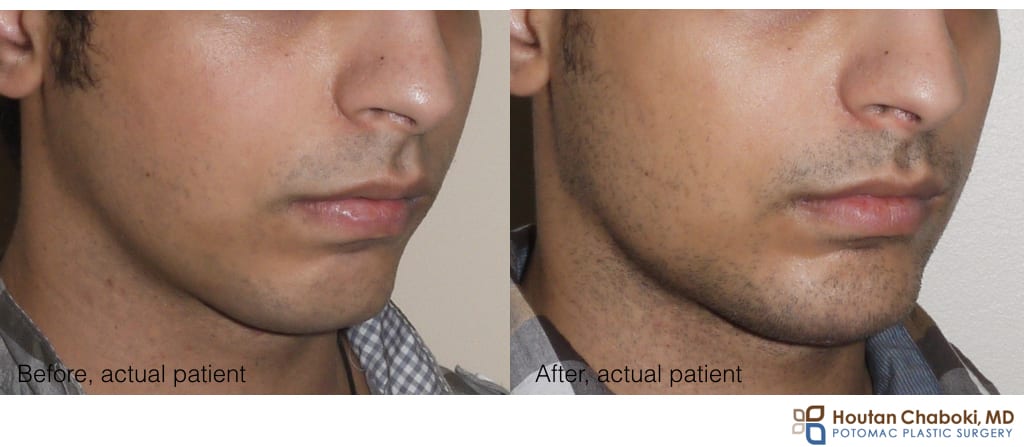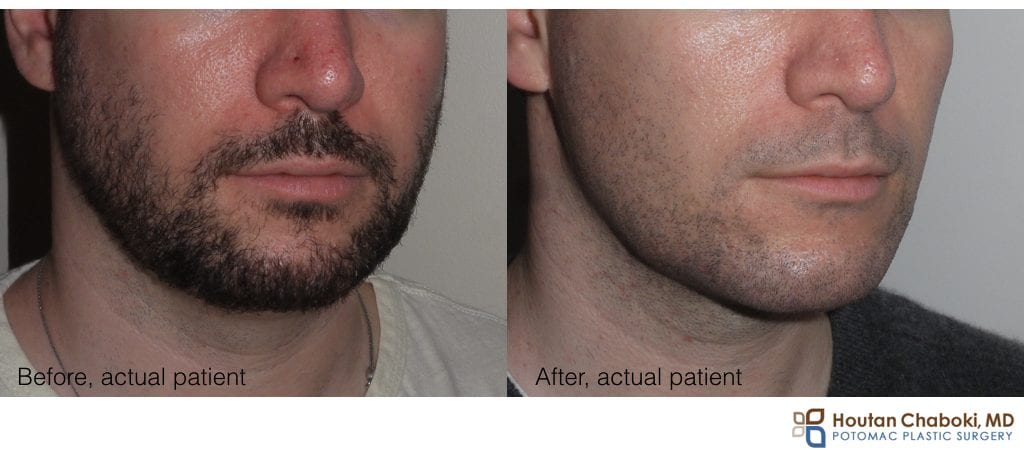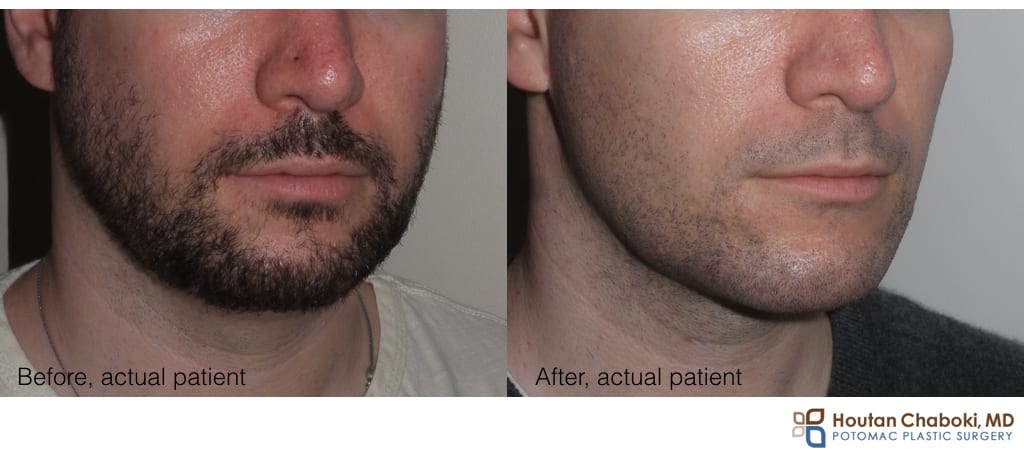“Why does the plastic surgeon look at my chin when evaluating my nose for rhinoplasty? I just want to make my nose smaller.” Rhinoplasty patients who are looking to reduce the size of their nose may ask this question. Plastic surgeons, however, will examine the chin during a rhinoplasty consultation for a couple of key reasons.
First, plastic surgeons and rhinoplasty specialists often look at the entire face before focusing on a specific area. Generally, one wants to reduce attention from certain areas or features (e.g., nose, wrinkles, etc) and bring attention to other areas (ex. eyes, lips, etc) for a balanced appearance. Rhinoplasty should not necessarily make a nose look a certain way, but rather less, perhaps, distracting.
The nose should be balanced with the face and chin. – Houtan Chaboki
Second, rhinoplasty patients with “big” noses often have “small” chins. The nose itself may be an appropriate shape and size, but a relatively small chin and jaw will make the nose appear disproportionately larger. If a plastic surgeon only reduces the size of the nose to make it more comparable to the chin, there is a higher probability of unnatural results and breathing problems for the patient.
The patient example above demonstrates before and after chin implant surgery. This patient previously had a rhinoplasty by another plastic surgeon in New York. After the rhinoplasty, he wanted further cosmetic facial improvement. He underwent silicone implant chin augmentation by Dr. Chaboki, which not only better defined his jawline, but also improved the overall balance of his face.
This nose-chin size relationship is partially genetic and partially developmental during facial growth. Patients who may have had nasal allergies or congestion tend to breath with their mouth open, which partially limits growth of the jaw bone. Often these rhinoplasty patients also have a history of wisdom teeth extraction, since the jaw bones are too small to accommodate the teeth. Temporomandibular joint syndrome (TMJ) is also very common in rhinoplasty patients with a deviated septum, chronic sinus condition, or nasal valve problems.
The patient example in the below photographs came for cosmetic rhinoplasty, as he felt his nose was too large. He was aware of his small chin, but initially felt the nose was more of an issue for his appearance. His lower jaw was excessively small due to a combination of genetics and facial development. As a result, his nose appeared relatively large. Dr. Chaboki performed silicone chin and jaw augmentation with implants without any rhinoplasty. He now has an improved appearance of the nose without nasal surgery.
 Therefore, don’t be surprised when your plastic surgeon examines broad facial areas, instead of focusing on only one area. If you are considering nose or chin surgery, contact the office today to schedule a consultation.
Therefore, don’t be surprised when your plastic surgeon examines broad facial areas, instead of focusing on only one area. If you are considering nose or chin surgery, contact the office today to schedule a consultation.



Leave a Reply